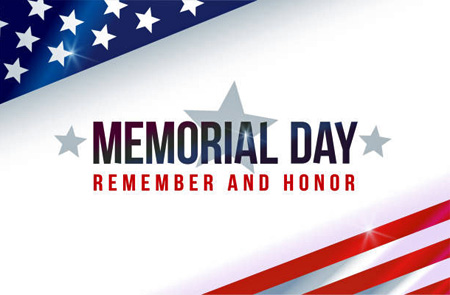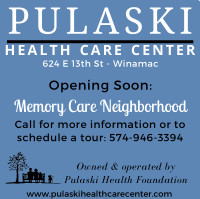
Pastor Stephens will provide the invocation and benediction. A member of the auxiliary will place wreaths at the war memorials. A combined firing squads of the American Legion and VFW will salute the military service members who have died in the line of duty. Taps, played by Emily Hintz, will conclude the ceremony.
NOTE: Due to construction at the courthouse, the ceremony will be conducted from a speaker's wagon placed in the street.
Cemetery Visits
The American Legion and VFW will also honor the country’s deceased veterans with morning visits to the following cemeteries on Memorial Day:
The Winamac VFW will visit:
Pro Cemetery - 9:20 a.m.
St. Joseph’s (South) - 9:35 a.m.
Pulaski Presbyterian - 9:45 a.m.
St. Joseph's (West) - 9:55 a.m.
Star City West (IOOF) - 10:15 a.m.
The Winamac American Legion will visit:
Mount Zion (Franklin Twp.) - 9:25 a.m.
Reed Cemetery (SR 14 E) - 9:45 a.m.
St. Peter’s (SR 14 W) - 10 a.m.
Winamac - 10:15 a.m.
Note: Due to the expansion of the Winamac Cemetery, the Honor Guard will line up in the McFarland addition (south side of West Main Street) between County County Roads 50 and 60W.
The history of Memorial Day
Memorial Day is a U.S. holiday, observed on the last Monday of May, honoring the men and women who died while serving in the U.S. military.
Originally known as Decoration Day, it originated in the years following the Civil War and became an official federal holiday in 1971, according to History.com. Many Americans observe Memorial Day by visiting cemeteries or memorials, holding family gatherings and participating in parades. Unofficially, it marks the beginning of the summer season. The Civil War, which ended in the spring of 1865, claimed more lives than any conflict in U.S. history and required the establishment of the country’s first national cemeteries.
Three years after the Civil War ended, on May 5, 1868, the head of an organization of Union veterans — the Grand Army of the Republic (GAR) — established Decoration Day as a time for the nation to decorate the graves of the war dead with flowers, according to the U.S. Department of Veterans Affairs. Maj. Gen. John A. Logan declared it should be May 30. It is believed the date was chosen because flowers would be in bloom all over the country. The first large observance was held that year at Arlington National Cemetery, across the Potomac River from Washington, D.C. The ceremonies centered around the mourning-draped veranda of the Arlington mansion, once the home of Gen. Robert E. Lee. Various Washington officials, including Gen. and Mrs. Ulysses S. Grant, presided over the ceremonies. After speeches, children from the Soldiers’ and Sailors’ Orphan Home and members of the GAR made their way through the cemetery, strewing flowers on both Union and Confederate graves, reciting prayers and singing hymns.
Even before that 1868 observance in Washington, several locations around the country were holding local springtime tributes to the Civil War dead, the U.S. Veterans Affairs office reports. Approximately 25 places have been named in connection with the origin of Memorial Day, many of them in the South where most of the war dead were buried. But in 1966, Congress and President Lyndon Johnson declared Waterloo, N.Y., the “birthplace” of Memorial Day. There, a ceremony on May 5, 1866, honored local veterans who had fought in the Civil War. Businesses closed and residents flew flags at half-staff. By the end of the 19th century, Memorial Day ceremonies were being held on May 30 throughout the nation.







